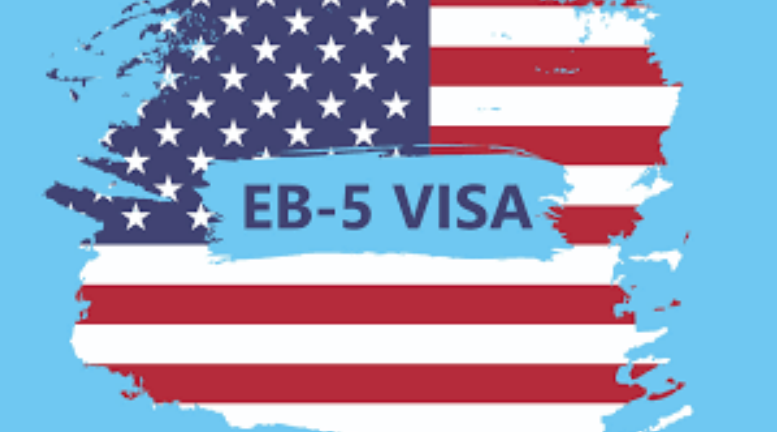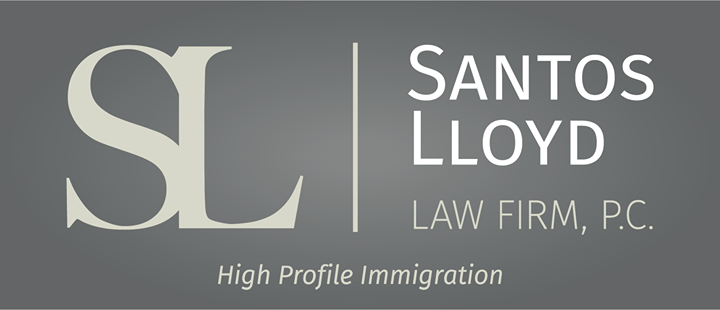Business
Business
Find valuable information and updates about business immigration work visas, investor visas, employment-based green cards, and permanent residency for individuals with extradionary talent. Our experienced immigration professionals share their expertise on ever-changing immigration policy and related issues. Be sure to check back often and subscribe for up-to-date information!
Subscribe
Subscribe
Thank you for subscribing.
Oops, there was an error sending your message.
Please try again later
Please try again later

par Kyle Huffman
•
14 mars 2024
Embarking on the EB-5 immigration journey is both a profound personal endeavor and a strategic investment decision. For individuals seeking to make the United States their new home while contributing to its economic landscape, the EB-5 Immigrant Investor Program offers a pathway unlike any other. This program, established by the U.S. government in 1990, provides foreign investors with the opportunity to obtain permanent residency in the United States by investing in job-creating enterprises . However, navigating the complexities of the EB-5 process requires a thorough understanding of its intricacies, requirements, and potential pitfalls. In this guide, we provide a brief overview of the steps and documents involved in the EB-5 immigration process, shedding light on its key components, eligibility criteria, investment options, and procedural steps, empowering prospective investors with the knowledge needed to embark on this transformative journey with confidence. Before selecting a project and making the investment, it is important for an EB-5 investor to meet with an immigration attorney to strategize for the application. It is required to show the Immigration Service that all funds used in the investment were lawfully earned and retained , so your attorney will want to understand where the money for the investment is coming from and where it has been held since it was earned. Once satisfied with the source and tracing of funds, the investor can select a project to invest in. Following the passage of the EB-5 Reform & Integrity Act, certain investment projects have already been pre-approved by USCIS by filing form I-956 and receiving designation as a Regional Investment Center. The required minimum investment is $1,050,000 by default; however, this amount is reduced for investment centers in “Targeted Employment Areas” to $800,000 . After submitting the investment to the regional center, the investor will then work with their attorney to create the I-526 petition. At this stage of the case, it is time to show USCIS the source and tracing of all of the funds used for the investment. The types documentation required in order to show the lawful source and tracing of funds is extremely broad and highly dependent on where the money is coming from in each particular case, but the most common documents include W-2 or 1099 tax forms, federal and state tax returns, bank account statements, purchase and sale contracts from the sale of real estate, stock certificates, loan contracts, inheritance documents, and wire transfer records, among many other possibilities . EB-5 applicants can either process their green cards through USCIS by filing an I-485 application for Adjustment of Status, or process through the consulate in their home country . If already in the United States on another valid status, the Adjustment of Status application can be submitted concurrently with the I-526 petition. If processing through a consulate overseas, the investor will have to wait until the I-526 is approved before beginning the consular process. The primary applicant, along with a spouse and any unmarried children under 21 years of age are able to receive permanent residency through the EB-5 process. At the completion of either process, whether requesting the Green Card within the United States or seeking entry through a consulate, USCIS will issue conditional green cards, with a validity of two years . Within the last three months before the conditional green card expires , the investor and family will need to file an I-829 application for removal of conditions on the green card. At this stage, nearly two years after the investment has been made, the Immigration Service is confirming whether the investment remains in the project and the requisite 10 jobs have been created . Following I-829 approval, the investor and their family will receive permanent green cards, with a 10-year validity. The investor and family will be able to apply for United States Citizenship five years after the initial green card is issued . The conditional green card does count for this purpose, so citizenship will become a possibility approximately 3 years after the permanent green cards are issued. In conclusion, the EB-5 Immigrant Investor Program stands as a unique avenue for individuals around the globe to fulfill their aspirations of living and thriving in the United States. Through strategic investment and dedication to job creation, participants not only secure permanent residency but also contribute to the nation's economic growth and prosperity. However, it is crucial for prospective investors to approach the EB-5 process with meticulous planning, thorough research, and expert guidance to navigate its complexities successfully . By understanding the program's requirements, exploring investment options, and adhering to procedural guidelines, aspiring immigrants can embark on their EB-5 journey with clarity and confidence. Ultimately, the EB-5 program represents more than just a pathway to residency—it embodies the spirit of entrepreneurship, innovation, and opportunity that defines the American dream. If you believe you may qualify for the EB-5 program or if you have any questions, please schedule a consultation with one of our experienced attorneys and we will be more than happy to assist you.

par Flavia Santos Lloyd
•
6 juillet 2023
Entrepreneurs and investors are key drivers of economic growth and job creation, and the United States has long been a destination of choice for those seeking to start or grow their businesses. However, navigating the U.S. immigration system can be complex and time-consuming. In this article, we will discuss the various non-immigrant visa options available to entrepreneurs and investors looking to enter the United States. L-1 Intracompany Transferee Visa The L-1 Intracompany Transferee Visa is a visa category specifically designed for executives, managers, and employees possessing specialized knowledge who are relocating from a foreign corporation to a U.S. affiliate. The eligibility for an L-1 visa requires the foreign corporation and the U.S. affiliate to be connected through common ownership or control. Transferees must also demonstrate that they have been employed abroad for at least 12 months in an executive, managerial, and specialized knowledge capacity. An employee being relocated might also be heading to the United States to set up an office if the company doesn't have an existing presence there. The L-1 visa isn't the best choice for someone in the early stages of launching a company, particularly if the business is being established in the United States. However, it could be a viable option for an entrepreneur who has, for instance, kick-started a business outside of the United States which will maintain its operations, or if the entrepreneur merges operations with a foreign company where they have previously been employed. E-1 Treaty Trader Visa E-1 Treaty Trader Visa category is designated for nationals of countries with which the U.S. maintains treaties of commerce and navigation. An entrepreneur qualifying for an E-1 visa must be entering the U.S. to carry out substantial trade, including trade in services or technology, principally between the U.S. and the treaty country. Trade, as defined, must involve an exchange of goods, money, or services. Virtually any goods or services can meet this requirement. The transaction flow between the two countries should be verifiable, typically done through documents such as purchase orders, wire transfers, or bills of lading. To determine the substantiality of the trade, the Department of State (DOS) will assess the frequency and monetary value of the transactions. More regular, high-value transactions are given greater consideration. However, smaller businesses can also qualify if they can demonstrate that the transaction volume is sufficient to support the treaty trader(s) and their family. The DOS applies a general rule stating that at least 50% of the trade must be between the United States and the treaty country. Thus, applicants should provide evidence of their total business transactions and proof that a minimum of 50% is between the two countries. The remaining trade can be domestic or international with other countries. Even if a US-based subsidiary meets the 50% requirement, the parent company abroad does not necessarily need to conduct 50% of its trade with the United States. Due to the requirement of demonstrating substantial trade history, it may be challenging for early-stage startups to qualify for an E-1. This visa type is more frequently used by established entrepreneurs with a foreign business and a US customer base, who wish to continue their operations in the US. In some instances, foreign firms aiming to penetrate the US market may use an E-1 for a newly established US subsidiary and start moving inventory for sale in the US. In this case, all trade may be between the foreign parent and US subsidiary, thereby comfortably meeting the 50% threshold. E-2 Treaty Investor Visa E-2 Treaty Investor Visa is for citizens of countries that have a treaty of commerce and navigation with the United States. To qualify for an E-2 visa, an entrepreneur must be coming to the United States to develop and direct the operations of a business in which they have invested, or are in the process of investing, a substantial amount of capital. In the classic example of an E-2 investment, the E-2 investor transfers their personal wealth from a foreign bank account into the bank account of their new US enterprise, thereby establishing their investment. However, the Foreign Affairs Manual (FAM) provides some flexibility, enabling the officer to consider other "arrangements" as an "investment." For those not intending to finance the E-2 enterprise entirely or partially with their personal funds, the nationality of other investors needs to be considered to ensure that at least 50% of the company shares remain in the hands of nationals from the E-2 treaty country. For instance, suppose one co-founder is American and the other is French, and they each own 50% of the company, contributing $40,000 from their personal wealth as initial capital for the company. To raise additional funds, they each decide to swap 7% of their equity (14% in total) with an angel investor for $150,000. If the angel investor is also French, then 57% of the company is now owned by French nationals; but if the angel is a U.S. citizen, then only 43% of the company is French, and it no longer qualifies as a French company for E-2 purposes. In this scenario, the founders will need to switch to another visa type before the equity exchange, as their E-2 will no longer be valid when the company loses its treaty nationality. A central concern for every E-2 application is the "source of funds." The applicant must clearly demonstrate the lawful origin of their investment funds, along with evidence of ownership and control. Moreover, to be classified as an E-2 investment, the invested assets or funds must be "at risk." This means that if the business fails, the investment is proportionately lost. Though the investment capital may be loan-based, the loan cannot be secured against the assets of the E-2 enterprise. Personal loans, which may be secured by personal assets like a second mortgage or unsecured loans typically obtained from family, friends, or business partners, are permissible. O-1 Visa The O-1 visa category is a unique and advantageous option for startup entrepreneurs and business owners who have demonstrated exceptional prowess in their field. The O-1A visa variant specifically caters to individuals exhibiting extraordinary ability in the sciences, education, business, or athletics. This makes it a viable avenue for those looking to establish or expand their business ventures in the US without the necessity of maintaining an overseas office or providing evidence of trade and investment, as required by L-1 and E-1/E-2 visas. Unlike the more traditional visa categories, the O-1A visa shifts the emphasis onto the beneficiary's individual achievements within their domain. It demands that the beneficiary meets at least three of the eight regulatory criteria set forth by the US Immigration Services. These criteria form a comprehensive measure of the individual's accomplishments, recognition, and overall standing in their respective field. For instance, if the beneficiary has been the recipient of nationally or internationally recognized prizes or awards, it highlights their excellence and industry-leading competence. Alternatively, membership in prestigious associations which require commendable achievements as judged by recognized experts can also serve as evidence of their extraordinary ability. The O-1 visa offers an alternate route that places an emphasis on individual expertise and recognition in the applicant's field, rather than specific trade or investment quotas. This visa is especially beneficial for those who have demonstrated exceptional capability and achieved a high degree of success in their respective business domain. Overall, the O-1A visa offers an effective immigration route for extraordinarily talented entrepreneurs and business owners. By meeting and surpassing the eligibility criteria, they can gain access to the vast opportunities in the US market, thereby furthering their business ventures and contributing to the economic growth and diversification of the US. Conclusion For foreign entrepreneurs and investors, several U.S. immigration options are available: the E-1 treaty trader visa, the E-2 treaty investor visa, the L-1 intra-company transferee visa, and the O-1 visa for individuals with extraordinary ability. While E-1 and E-2 visas center on trade and investment respectively, the L-1 is for managers or executives transferring to a U.S. branch of their company, and the O-1 visa acknowledges individual expertise and accomplishments. Each visa has unique prerequisites, necessitating the guidance of an immigration attorney for optimal strategy selection. Correct navigation of these options opens vast U.S. entrepreneurial opportunities and resources.

par Eduardo Mattos
•
10 février 2023
There are several types of visas that allow you to come to the United States and work. Employment-based visas will give you the opportunity to live and work in the U.S. Your education, skills, and experience are some of the things used to determine who is eligible for an employment-based visa. One “EB” visa many people qualify for is an EB-3 visa.

par April Perez
•
3 novembre 2022
If you file an EB-1 petition based on your extraordinary ability in your field, and it has been approved what happens next?
First congratulations are in order because that is great news! Second you now need to gather up some documents and information to apply for Adjustment of Status.

par Monica Zafra
•
6 octobre 2022
Great news for our EB-2 NIW clients! USCIS continues to expand on premium processing for petitioners with a pending I-140, Immigrant Petition for Alien Workers under the EB-2 and EB-2 classifications. This third phase only applies to previously filed Form I-140 petitions under the E13 multinational executive and manager classification or E21 classification as a member of professions with advanced degrees or exceptional ability seeking a national interest waiver (NIW). Clients who are eligible for a premium processing upgrade as of USCIS' announcement on September 15, 2022 are E13 multinational executive and manager petitions received on or before January 1, 2022; and E21 NIW petitions received on or before February 1, 2022 Eligible petitions may submit Form I-907 to USCIS with the required filing fee of $2,500. The premium processing timeframe is 45 days from the date USCIS receives the request for premium processing. Santos Lloyd has been steadily receiving I-140 decisions, so we anticipate that more decisions will be coming throughout the next few months until the end of the year. We will continue to keep updated on policy changes and updates from USCIS and will post updates regularly on these changes. For clients who are eligible and interested in the upgrade, please contact our office for further information. If you are not yet eligible for the upgrade, please await further information from USCIS as we anticipate more phases coming in the months to come.

par Kyle Huffman
•
6 octobre 2022
We have continued to have great results in our EB-2 National Interest Waiver cases this month. During the month of September, our firm received over a dozen National Interest Waiver Approvals, with none being denied. These approvals were for people from a diverse set of professional backgrounds including entrepreneurs, restaurateurs, a medical professional, soccer coach, electrician, travel agency, and more. These individuals and their families are now looking forward to permanent residency in the United States. If you have any questions about what this topic means for you, please schedule a consultation with one of our experienced attorneys. We look forward to working with you.

par Santos Lloyd Law Team
•
15 septembre 2022
The H-1B visa allows a U.S. company to temporarily employ a foreign national in the U.S. on a nonimmigrant basis (this means temporary work visa) in a specialty occupation. A specialty occupation requires theoretical and practical application of a body of specialized knowledge and a bachelor's degree or the equivalent in the specific specialty. The maximum number of years a foreign national can possess an H-1B visa is six (6) years.

par Kyle Huffman
•
28 juillet 2022
In years past, spouses of certain E and L visa categories were required to apply for and receive an Employment Authorization Document in order to work in the United States. However, as the result of a settlement reached by USCIS in the class action lawsuit Shergill v. Mayorkas on November 10, 2021, USCIS now considers E and L dependent spouses to be authorized for employment incident to their status.
Most Recent Posts
Most Recent Posts

par Juliana LaMendola
•
20 février 2025
On January 20, 2025, President Donald Trump signed an Executive Order imposing new restrictions on migrants, including limitations on asylum and humanitarian protections. The order directs the Department of Homeland Security (DHS) to terminate all categorical parole programs that conflict with U.S. policies , which includes parole processes for Cuban, Haitian, Nicaraguan, and Venezuelan nationals. Additionally, this provision could impact parole programs for individuals from Afghanistan, Ukraine, and other countries. Beyond restricting parole, the executive order introduces several border security measures , including building more physical barriers, increasing the number of border personnel, and stopping the use of the CBP One mobile application . The order specifically directs the Department of Defense (DOD) and DHS to build more border walls to establish what it calls “complete operational control” of the southern border. Additionally, it ordered the immediate shutdown of the CBP One mobile app, which previously allowed asylum seekers to schedule appointments at U.S. Ports of Entry. As a result, all existing appointments have been canceled immediately . The order also initiates the reinstatement of the “Remain in Mexico” program , also known as the Migrant Protection Protocols (MPP) , across all sectors of the southern border. Under MPP, asylum seekers must remain in Mexico while awaiting the outcome of their U.S. immigration court proceedings, significantly altering the process for those seeking refuge in the country. These measures reinforce the Trump administration's broader effort to restrict asylum and humanitarian protections at the U.S. border . If you or someone you know may be affected by this executive order, it is essential to stay informed and understand your legal rights. Consulting with an immigration attorney can help navigate these evolving policies and ensure the best course of action moving forward.

par Shirin Navabi
•
13 février 2025
The E-2 Visa is a non-immigrant visa that allows foreign investors from treaty countries to live and work in the United States by starting or purchasing a business. Unlike other visa categories, it does not require a fixed minimum investment amount. Instead, applicants must demonstrate that their investment is substantial and sufficient to ensure the success of their business. The visa is renewable indefinitely as long as the business remains active and meets the necessary criteria, making it an attractive option for entrepreneurs seeking long-term opportunities in the U.S. One of its key advantages is flexibility. Investors can establish a new business, acquire an existing one, or enter into franchise opportunities. Additionally, spouses and children under 21 can accompany the primary applicant, with spouses eligible to apply for work authorization. This makes the E-2 Visa a practical option for business-minded individuals looking to establish themselves in the U.S. market. While the E-2 Visa itself has remained a stable option, shifts in U.S. immigration policies have influenced the application process and overall investor experience. Understanding these changes is essential for anyone considering this pathway. Policy Shifts and the E-2 Visa: Lessons from the Past During the first Trump administration (2017–2021), U.S. immigration policies became more restrictive across multiple visa categories. Although the E-2 program was not directly limited, broader changes had an impact. The "Buy American, Hire American" Executive Order, signed in 2017, led to heightened scrutiny of visa applications, requiring investors to provide stronger evidence that their business would create jobs and contribute to the U.S. economy. This resulted in an increase in Requests for Evidence (RFEs) and denials for those unable to meet these expectations. Another significant change was the suspension of the Interview Waiver Program, which meant all E-2 applicants, including renewals, had to attend in-person interviews at U.S. embassies. This extended processing times and increased scrutiny of applications. Additionally, visa reciprocity agreements were reviewed and adjusted, impacting validity periods and costs for certain countries. For instance, Iranian citizens were deemed ineligible for the E-2 Visa due to the termination of the treaty. These adjustments significantly affected investors from impacted nations, increasing their costs and renewal frequency. Despite these policy shifts, the approval rate for E-2 visas remained relatively stable. According to data from the U.S. Department of State, there were over 43,000 approvals in 2019, reflecting the program’s continued viability. Even in 2020, when the COVID-19 pandemic caused global disruptions, approval numbers remained significant. These figures highlight that while the process became more rigorous, well-prepared investors continued to secure visas by demonstrating strong business plans, substantial investments, and clear economic contributions. What to Expect Moving Forward As the new Trump administration takes shape, further immigration policy changes are likely. While it is too soon to predict the exact impact on the E-2 Visa, past trends suggest increased scrutiny. However, the program itself has remained intact across multiple administrations, reinforcing its reliability for foreign entrepreneurs. Those considering this visa should stay informed and ensure their applications meet evolving requirements. A well-prepared investment strategy, clear documentation, and a defined job creation plan can make a significant difference in navigating any potential policy shifts. Why the E-2 Visa Remains a Strong Choice The E-2 Visa continues to be a resilient and valuable option for foreign entrepreneurs. Even during periods of policy change, approval rates have remained strong for investors with well-structured applications. The ability to renew indefinitely, combined with its flexibility in investment size and business type, makes it one of the most attractive pathways for international investors. With the right preparation, investors can confidently pursue the E-2 Visa, knowing that history has shown its stability even amid shifting political landscapes. By staying ahead of policy changes and ensuring a solid business strategy, entrepreneurs can take advantage of the opportunities the U.S. market has to offer. If you are ready to take the next step toward launching your business in the U.S., you can contact our office for expert guidance and personalized assistance with your application.

par Kris Quadros-Ragar
•
6 février 2025
On January 29, 2025, President Trump signed the Laken Riley Act into law, significantly altering how immigration policies are enforced in the United States. This legislation grants State attorneys general and other authorized officials unprecedented authority to interpret and implement federal immigration policies. It also empowers them to take legal action against the federal government if they believe federal immigration enforcement negatively impacts their state. With this new authority, states now play a direct role in shaping immigration outcomes—a responsibility traditionally held by the federal government. One of the most immediate effects of the Laken Riley Act is that it allows states to seek injunctive relief to block the issuance of visas to nationals of countries that refuse or unreasonably delay the acceptance of their citizens who have been ordered removed from the United States . This means that if a country does not cooperate with U.S. deportation efforts, its nationals—regardless of their legal status—could face significant difficulties obtaining or renewing visas. As a result, foreign nationals from these countries may encounter increased uncertainty when traveling internationally or securing work authorization in the U.S. Beyond visa processing, the law introduces a new level of unpredictability into the immigration system. By allowing state attorneys general to intervene in federal procedures, and immigration policies that may now vary based on state-level decisions. In the coming months, it remains to be seen how individual states will wield this power—whether they will actively seek to block visa issuance or push for broader immigration enforcement measures. For foreign nationals and employers, staying informed about which countries are deemed “uncooperative” is now more important than ever. Those needing visa renewals or planning international travel should prepare for potential delays and seek professional guidance to navigate these uncertainties. The Laken Riley Act also mandates federal immigration authorities to detain and deport individuals without legal status who are charged with certain offenses, including minor theft or shoplifting, assaulting a law enforcement officer, and crimes resulting in death or serious bodily injury. This provision underscores a stricter approach to immigration enforcement, affecting individuals accused of both minor and serious offenses. With immigration policies now subject to a new layer of state involvement, it is more important than ever to stay informed and prepared for potential challenges. If you have concerns about how the Laken Riley Act may affect your immigration status or business, contact Santos Lloyd Law Firm for strategic counsel tailored to your needs.
Santos Lloyd Law Firm, PC
Email: info@santoslloydlaw.com
Phone: (949) 316-0078
Fax: (949) 271-4500
Office Visits by Appointment Only:
4340 Von Karman Ave, #110
Newport Beach, CA 92660
Phone: (949) 316-0078



